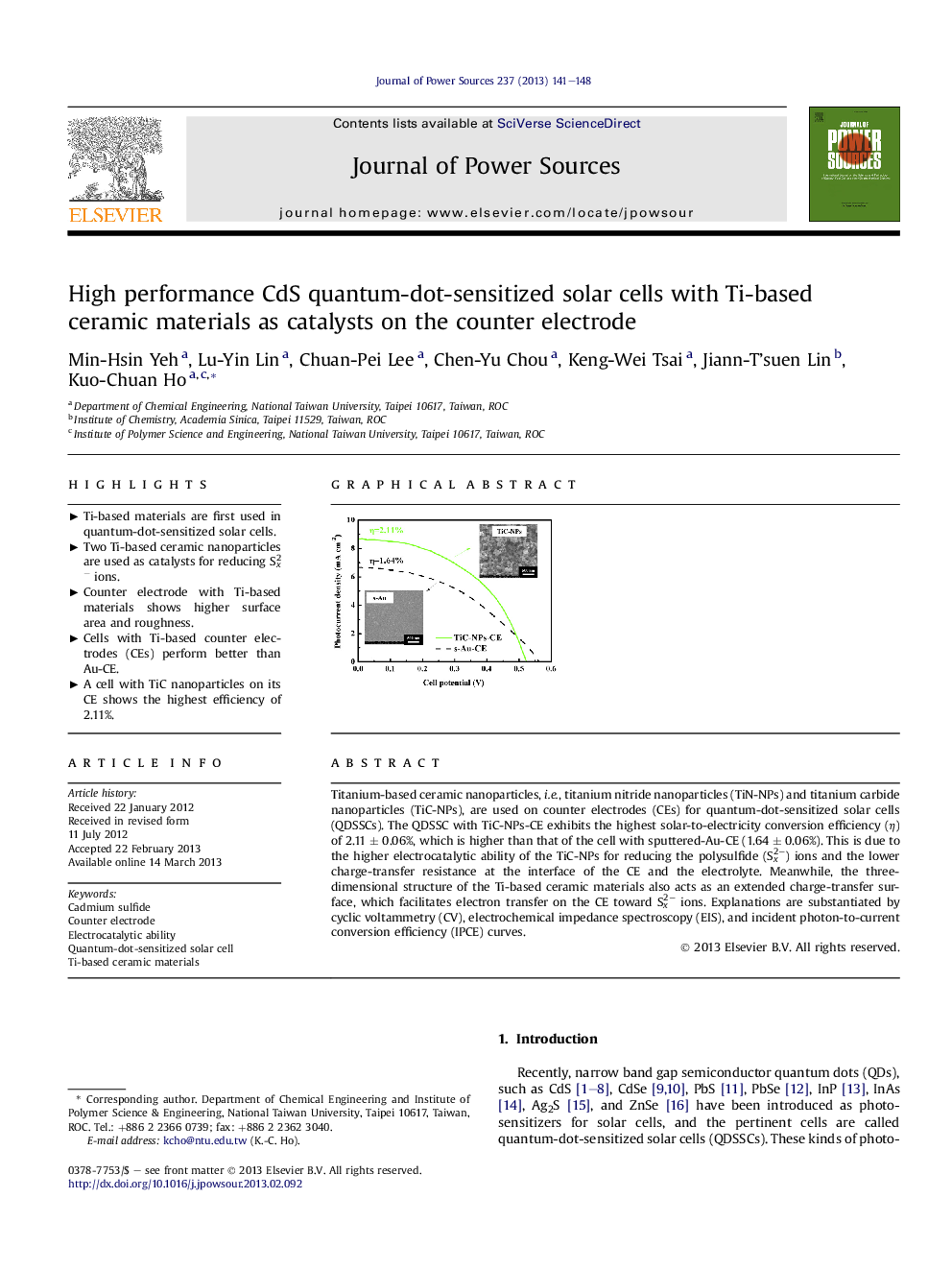| کد مقاله | کد نشریه | سال انتشار | مقاله انگلیسی | نسخه تمام متن |
|---|---|---|---|---|
| 1287733 | 1497995 | 2013 | 8 صفحه PDF | دانلود رایگان |

Titanium-based ceramic nanoparticles, i.e., titanium nitride nanoparticles (TiN-NPs) and titanium carbide nanoparticles (TiC-NPs), are used on counter electrodes (CEs) for quantum-dot-sensitized solar cells (QDSSCs). The QDSSC with TiC-NPs-CE exhibits the highest solar-to-electricity conversion efficiency (η) of 2.11 ± 0.06%, which is higher than that of the cell with sputtered-Au-CE (1.64 ± 0.06%). This is due to the higher electrocatalytic ability of the TiC-NPs for reducing the polysulfide (Sx2−) ions and the lower charge-transfer resistance at the interface of the CE and the electrolyte. Meanwhile, the three-dimensional structure of the Ti-based ceramic materials also acts as an extended charge-transfer surface, which facilitates electron transfer on the CE toward Sx2− ions. Explanations are substantiated by cyclic voltammetry (CV), electrochemical impedance spectroscopy (EIS), and incident photon-to-current conversion efficiency (IPCE) curves.
Figure optionsDownload as PowerPoint slideHighlights
► Ti-based materials are first used in quantum-dot-sensitized solar cells.
► Two Ti-based ceramic nanoparticles are used as catalysts for reducing Sx2− ions.
► Counter electrode with Ti-based materials shows higher surface area and roughness.
► Cells with Ti-based counter electrodes (CEs) perform better than Au-CE.
► A cell with TiC nanoparticles on its CE shows the highest efficiency of 2.11%.
Journal: Journal of Power Sources - Volume 237, 1 September 2013, Pages 141–148